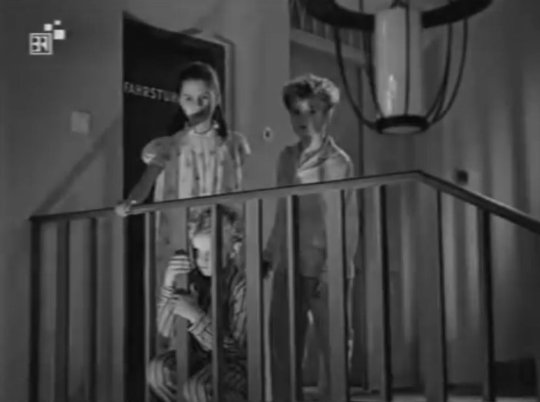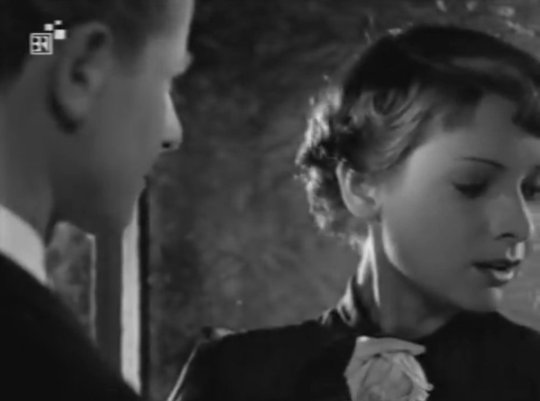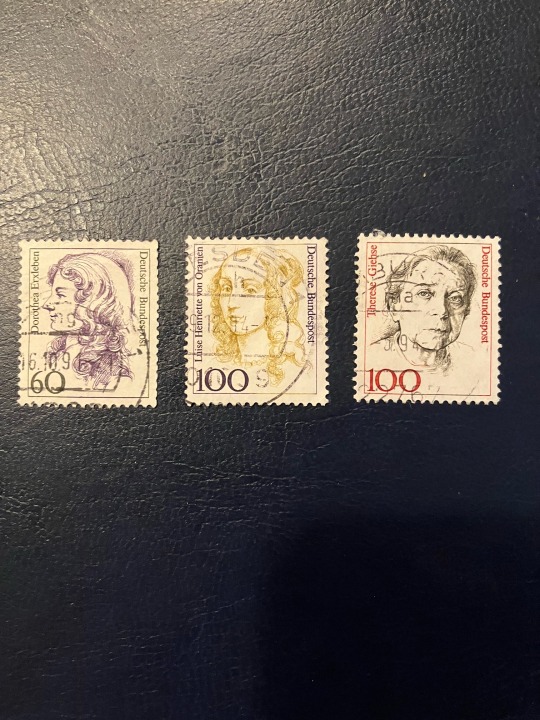#therese giehse
Text



3 notes
·
View notes
Text
BLACK MOON:
A strange detour
Leads girl to weird family
Twisted wonderland
youtube
#black moon#random richards#poem#haiku#poetry#haiku poem#poets on tumblr#haiku poetry#haiku form#poetic#criterion collection#criterion channel#cathryn harrison#Therese giehse#Alexandra Stewart#joe dallesandro#louis malle#joyce bunuel#Ghislain uhry#Youtube
2 notes
·
View notes
Text









https://www.youtube.com/watch?v=eSexGB94A-I
#vater braucht eine frau#harald braun#1952#ruth leuwerik#bruni löbel#therese giehse#dieter borsche#kvinnodröm#ingmar bergman#about photography#otto#dittsche#immenhof#träumerei#nora#frühlingssinfonie
0 notes
Text

No hát egy egészen nagyszabású sorozat egy részét vesszük górcső alá, mely évtizedeken, államalakulatokon és pénznemeken is átívelt. Németországról van szó, annak is - egy darabig - a nyugati feléről. 1986-ban indították el az NSZK-ban a 'Híres német nők', vagy 'Német nők a történelemben' sorozatot (mindkét néven hivatkoznak rá), melyet egészen 2003-ig adtak ki, mindig új és új hölgyekkel, de változó intenzitással és darabokkal. Volt amikor kimaradt egy év, például '90-ben, volt hogy három is a '90-es évek második felében. Jellemzően 2-6 bélyeg jelent meg egy évben. Ezek amik nekem vannak is mind különböző évjáratból származnak. Érdekesség még, hogy ugye a Német Egység mellett, történt más is: átállt az ország a vége felé az euróra. Így tehát '86-tól 2000-ig a németeknél megszokott pfenningben feltüntetett értékek szerepelnek a bélyegeken a pénznem jelzés nélkül, 2000 és 2001-ben már kettős értékek voltak, pfenningben és euróban is feltüntették, míg 2002-től jöttek az eurós bélyegek. Ez a sorozat hatalmas példányszámban készült, szóval jórészt nem nagyon értékesek a példányok, bár vannak azért különbségek, illetve azért egyben a teljes gyűjtemény már értékest képvisel. Kicsit nézzük az enyémeimet részletesebben:
Dorothea Erxleben (60 pf) - 1987
Ő nem más, mint az első német orvosnő, édesapja is orvos volt és hamar észrevette lánya érzékét és érdeklődését a természettudományok iránt, így együtt tanította fivérével aki orvosnak készült. Ekkoriban nők még nem járhattak hivatalosan egyetemre. A fivér, Christian 1731-ben el is ment a hallei egyetemre, Dorothea pedig apja mellett maradt, és a gyakorlatban már kezelte az egyszerűbb eseteket. 1742-ben aztán kiadott egy értekezést, mely amelett érvelt, hogy a nők is járhassanak felsőoktatásba. Végül II. Nagy Frigyes porosz királytól kapott kivételt, és 1754-ben első nőként elvégezte a hallei egyetem orvosi szakát. 1761-es haláláig kiterjedt praxist folytatott szülővárosában, Quedlinburgban.

Bélyegügyben együtt 'jelent meg' egy 40 pfenninges darabbal melyen Maria Sibylla Merian illusztrátor látható.

Luise Henriette von Oranien (100pf) - 1994
Azaz magyarul Lujza Henrietta orániai hercegnő. Holland származású, Hágában született 1627-ben, az Orániai-Nassaui királyi ház leszármazottja. 19 évesen hozzáadják Frigyes Vilmos brandenburgi választófejedelemhez, annak ellenére hogy másba szerelmes :( Házasságuk első évei után költöznek Brandenburgba a fejedelem székhelyére. Henrietta minden utazására és hadjáratára követte a férjét, férje politikai tanácsadójává vált az évek során, például ő maga érte el a lengyel királynővel való levelezés útján, hogy Lengyelország ismerje el Poroszországot, cserébe ők is elismerik a Lengyel Szövetséget. Származása miatt szövetségi szempontból is értékes volt a házasság, pl. a holland támogatás Pomeránia elfoglalásához, vagy a francia-holland háborúban történő közös fellépés okán. Kortárs iratokban így hivatkoznak rá: 'Kevés fejedelemasszonynak volt ekkora befolyása.' A munka mellett szerencsére jutott idő másra is, habár nem szerelemnek indult, végülis a leírások szerint példás házasságban élt a pár, és hat gyermekük is született, köztük I. Frigyes porosz király is. Sajnos a többiek még kisgyermekként/babaként, vagy kora 20-as éveikben meghaltak. Etéren Henrietta sem volt nagyon szerencsés, mindössze 39 éves volt mikor elhunyt, a Berlini Dómban temették el, és a mai napig ott nyugszik. Agaras képet hoztam viszont:

Őt is párban adták ki egy 80 pfenninges Rahel Varnhagen von Ense írónővel együtt.

Therese Giehse (100 pf) - 1988
Müncheni zsidó-német családból származó színésznő, eredetileg Therese Gift néven született 1898-ban. 1920-ban lépett először színpadra, hamar Németország szerte (el)ismert sztárrá vált, a '20-as évek végétől egészen 1933-ig mind színpadon, filmen mitöbb a politikai kabaré műfajában is. A nácik hatalomra kerülése után rögtön Zürichbe távozik, és itt folytatja karrierjét elsősorban. '36-ban hozzámegy John Hampson homoszexuális angol íróhoz, így hozzájutván a brit útlevélhez, mely miatt a nácik nem tudják elhurcolni. 1941-ben a zürichi színházban ő játssza először Kurázsi mamát Bertolt Brecht híres darabjában. '45-ben a háború után aztán visszatér Németországba, és a vasfüggöny mindkét oldalán játszik, de legtöbbet szülőföldjén, Bajorországban. A számtalan színházi fellépés mellett több mint 20 filmben, és tv műsorokban is játszott. Otthonában, Münchenben éri a halál három nappal 77-edik születésnapja előtt.

'88-ban három ütemben is adtak ki Híres német nős sorozatokat, Giehse egy négyesbe került, együtt Hannah Arendt filozófussal, Mathilde Franziska Anneke valamint Hedwig Dransfeld írónővel.

#bélyeg#stamp#nszk#németország#dbr#deutchland#deutche bundesrepublik#híres német nők#famous german women#1987#1988#1994#60 pfenning#100 pfenning#dorothea erxleben#therese ghiese#luise henriette von oranien
20 notes
·
View notes
Photo

Therese Giehse (deceased)
Gender: Female
Sexuality: Lesbian
DOB: 6 March 1898
DOD: 3 March 1975
Ethnicity: Ashkenazi Jewish, German
Occupation: Actress
Note: Was a beard to John Hampson so she could escape Nazi Germany
#Therese Giehse#lgbt history#female#lesbian#1898#rip#historical#jewish#Ashkenazi Jewish#german#biracial#actor#popular#popular post
108 notes
·
View notes
Text
In the near future, the battle between the sexes rages... literally. 15 year old Lily tries to escape the carnage. She ends up following a talking black unicorn to an old cottage, which houses an odd assortment of characters. There is the group of children, who mostly run around naked and seem almost feral, except when they put on after dinner productions of Wagner's Tristan and Isolde. There is the brother and sister who are also named Lily like her. They can sing, but otherwise can only communicate through a type of telepathy involving touch. For some reason, inspired by the painting Jatayu Vadh created by Raja Ravi Varma, they try to kill each other. The central character is an old lady who is sometimes sweet and sometimes violent. She may or may not be communicating to someone over a radio transmitter. She can also speak through touch when she chooses to. She also needs to be breast fed occasionally to stay alive. ("Black Moon" film)

#nerds yearbook#sci fi movie#black moon#near future#dystopian#dystopia#cathryn harrison#louis malle#therese giehse#alexandra stewart#joe dallesandro#war#unicorn#black unicorn
9 notes
·
View notes
Photo




Lacombe Lucien (1974)
10 notes
·
View notes
Photo



Lacombe, Lucien (1974, France, Directed by: Louis Malle)
#Lacombe Lucien#Louis Malle#French cinema#1974#Pierre Blaise#aurore clément#Therese Giehse#If you havent seen this film I recommend it#the French don't like to discuss their involvement w the gestapo#this film was controversial#controversial films#*#mine#pixienatthecat#movies#70s movies
27 notes
·
View notes
Photo




Mädchen in Uniform (1958) Géza von Radványi and Eva Ebner
April 19th 2020
#madchen in uniform#1958#geza von radvanyi#eva ebner#romy schneider#lilli palmer#blandine ebinger#therese giehse#sabine sinjen#ginette pigeon#danik patisson#girls in uniform
33 notes
·
View notes
Photo

Lacombe, Lucien (1974). In 1944, an 18-year old boy from small-town France, collaborates with the Nazi-regime and subsequently falls in love with a Jewish girl.
It’s lowkey depressing how relevant this film – made in the 70s, based in the 40s – still is today. The concept of how easily displacement can lead to radicalisation, particularly in young men, feels more pertinent now than ever after all, and this film does a compelling job of building that concept up and breaking it down across the course of two hours. I generally find the idea of someone becoming deradicalised through romance pretty harmful though, and while I thought this slowburn drama was well-made, I can’t say I particularly enjoyed it. 7/10.
#lacombe lucien#1974#Oscars 47#Nom: Foreign Film#Patrick Modiano#Pierre Blaise#Aurore Clément#Holger Löwenadler#Therese Giehse#france#french#world war ii#war#7/10
0 notes
Photo


Black Moon | Louis Malle | 1975
Cathryn Harrison, Therese Giehse
70 notes
·
View notes
Text
"Erika Mann first asked Christopher Isherwood if he would marry her so that she could get a British passport. He refused but said he would ask Auden, who cabled back “DELIGHTED,” and arranged a wedding party at the pub near the school where he was teaching, attended by his colleagues and pupils. After the war, she and Auden were seldom in touch, but they never divorced and she left him a small legacy in her will." from the New York Review of Books
Erika Mann was a German writer and critic of Nazism living in Switzerland. She was Thomas Mann's daughter, and she was a lesbian. She asked Isherwood, a gay British writer, to marry her so that she could get a passport, as the Nazis were going to revoke her citizenship. He said no, but he asked his good friend and sometimes lover W. H. Auden, who said yes. Mann's lover, Therese Giehse, a German-Jewish actress also in exile in Switzerland, married another gay British writer for similar reasons.
#m.txt#erika had been previously married. to her brother's boyfriend.#she and her husband divorced around the time he and her brother broke up.#auden#nazism cw
9 notes
·
View notes
Link
Mit: Oskar Werner, Otto Collin, Käthe Gold, Erik Schumann, Therese Giehse u. a. |
Musik: Karl Sczuka |
Hörspielbearbeitung und Regie: Max Ophüls |
(Produktion: SWF/BR/RB 1953)
3 notes
·
View notes
Text
Dear Christa,
This story seems to have had many lives. It started as a play, first performed in 1930, in Leipzig, as Ritter Nérestan (“Knight Nérestan”), and later retitled as Gestern und heute (“Then and Now”, “Yesterday and Today”) for its premiere in Berlin. Its success led to a film adaptation in 1931, Mädchen in Uniform (“Girl in Uniform”, IMDb), directed by Leontine Sagan, and then to an English adaptation by Barbara Burnham, in 1932, performed as Children in Uniform, at the Duchess Theatre in London, starring Jessica Tandy as the protagonist Manuela.nThe story was then expanded and adapted into a novel, published in 1933, as Das Mädchen Manuela (“The Child Manuela”), and later it was once again made into a movie, in 1958, as Mädchen in Uniform (“Girl in Uniform”, IMDb), directed by Géza von Radványi, starring Romy Schneider.
The story centres on Manuela von Meinhardis, a teenager who is sent to a strict Prussian boarding school for military officer’s daughters, and falls in love with one of her teachers, Fräulein Elisabeth von Bernburg. However, while the play and the two movie adaptations start with Manuela arriving at the boarding school, the novel starts with her birth and provides her backstory. We learn about her parents’ fraught marriage, which culminates with her mother’s death.
Throughout the novel, we are given hints of Manuela’s lesbianism: as a child, she feels strongly attracted to a somewhat cruel classmate, Eva, and later falls madly in love with the mother of Fritz, a boy who had a crush on her. Mistakenly believing that Manuela likes Fritz, her widowed father decides to send her to the boarding school. Unlike the play (and the two movie adaptations), it’s only halfway through the novel that Manuela arrives at the school.
We are then given a grim description of the girls’ lives at school – deprived of their personal possessions, uniformized in their appearance and behaviour, forbidden of developing affection for their peers, curtailed in their freedom to communicate with their parents, and even lacking enough food and proper heating. Except for one beloved teacher, Elisabeth von Bernburg, the rest of the staff is stern and indifferent to the girls’ predicament.
At the headmistress’s birthday party, the girls put on a play, and Manuela’s performance at the leading male role is a success. After the play, excited by the impact of her performance on her beloved teacher, Manuela gets drunk and yells her love for Bernburg. The revelation comes as a shock for the headmistress as well as for the schoolgirls: Manuela is punished with strict isolation, and Bernburg is dismissed.
The play and the novel end on a darker note than the two movie adaptations. Whereas in the novel Bernburg capitulates to the headmistress’ decision and tells Manuela to stop loving her (“You must be cured of loving me“), in the film she dares to side with Manuela and challenges the headmistress’ authority (“What you call sin I call the great spirit of love, which has a thousand forms“). While, in the play as in the novel, Manuela makes a tragic decision, the two movie adaptations end on a more positive note with a victory of love and transgression over indifference and order.
In the novel as in the play, the homoerotic atmosphere is at the foreground, while in the movie adaptations this aspect is downplayed as a teenage crush on the part of Manuela and as a motherly affection on the part of the teacher. In the novel, however, Manuela repeatedly rejects femininity and wishes to have been born a boy; after the play at the headmistress’ party, her classmates even proclaim that she is a ‘half a boy’.
1931 movie adaptation
1931 movie adaptation
1958 movie adaptation
1931 movie adaptation: on the left, Erika Mann as one of the teachers
1932 British theatre adaptation with Jessica Tandy as Manuela
The homoeroticism is expressed in the novel by the sexual tension between Manuela and Eva, as well as by the fact that the boarding-school classmates are constantly shown holding hands, dancing in each other’s’ arms, and passing love notes. Differently from the movies, in the book, Oda, one of Manuela’s classmates, even touches her body with admiration and tries to kiss her.
In the novel, Manuela’s feelings for Bernburg are more openly reciprocated. Moreover, in the scene where the teacher gives the girl one of her chemises, this is more clearly depicted as an erotic token – as if, in a game of seduction, Bernburg were simultaneously nourishing and discouraging the girl’s affection: “I think of you, too, Manuela. But you know I can’t make exceptions. The others would be jealous.”
While in the novel the role played by the teacher is less ambiguous, in the movie adaptations she is depicted as a motherly figure whose tenderness may have been misunderstood by Manuela. Whereas in the movies Bernburg is a transgressive character and a humanist, in the play she is seen in a less optimistic light, as a woman who nurtures the girls’ feelings simply because she longs to be the headmistress herself – and we are then led to question the nature of student-teacher dynamic.
In the play as in the novel, Bernburg does not resign in the final confrontation with the headmistress, but rather conforms to her final decision. In the two movie adaptations, Bernburg is depicted as an embodiment of the criticism against the Prussian militaristic order: she is an antiauthoritarian figure who, by resigning from her job in the end, repudiates her role as an agent of the repressive order at the school.
In the novel and in the play, however, her stance is more ambiguous and less simplistic. Rather than a woman coming out to oppose oppression and embrace love, Bernburg is an agent of oppression in disguise: “You mustn’t persuade yourself it isn’t nice here”, she says to Manuela at one point. Rather than transgressing order, Bernburg is the agent who enforces it by making the oppression bearable – and she does so, by creating and being the centrepiece of a highly charged, homoerotic atmosphere.
In the novel, the story is told from different perspectives (particularly in the first half) through short sentences – which not only mimics a child’s point of view, but also prevents the narrative from slipping into melodrama. Although I love Therese Giehse’s brilliant take on the headmistress’ role in the 1958 movie adaptation, I prefer the 1931 more symbolic, less didactic ending: as the schoolgirls disobey the headmistress order and come to Manuela’s rescue, they stay in the light, grouped together with Fräulein von Bernburg, while the headmistress, defeated, retreats down the hall into the shadows. The silence is broken by the rhythmic sound of her cane tapping on the floor and the clanging of bells in the distance, pointing perhaps to the beginning of a new order, in which Fräulein von Bernburg wins ascendancy precisely by rejecting her old role as an enforcer of oppression.
As I’ve said at the beginning, this story has had many lives, and they seem, at the same time, to complement and to contradict one another. While the novel and the play are more consistently darker, I like the fact that, in the movies (and, in particular, in the 1931 adaptation), affection and love (and, in this case, homosexual love) are shown to pose a powerful threat to an oppressive order where girls are brought up for obedience and procreation: “You are all soldiers’ daughters and, God willing, you will all be soldiers’ mothers“, says the headmistress at one point.
Although the school is an all-woman environment, it is definitely not a space defined by female authority. Your girls in uniform are not only trapped within the school’s high walls and barred windows, but also within very confining, uniformed roles, set in iron by a will that lies outside their cage. Manuela may well be able to break it, but she will have to break her body, too, against its bars.
Yours truly,
J.

Aleksander Augustynowicz. Artist’s Daughters. 1907
About the book
Play: Gestern und Heute (1930, also known as Ritter Nérestan)
Adapted as Children in Uniform, by Barbara Burnham (1932)
Novel: Das Mädchen Manuela (1933 also known as Mädchen in Uniform).
Translated as The Child Manuela, tr. Agnes Neill Scott (Virago, 1994, Goodreads)
My rating: 4 stars
I read this book for German Lit Month
My thoughts on Mädchen in Uniform (“Girl in Uniform"), by Christa Winsloe (1933) #queerlit #germanlitmonth Dear Christa, This story seems to have had many lives. It started as a play, first performed in 1930, in Leipzig, as…
3 notes
·
View notes

